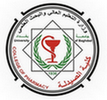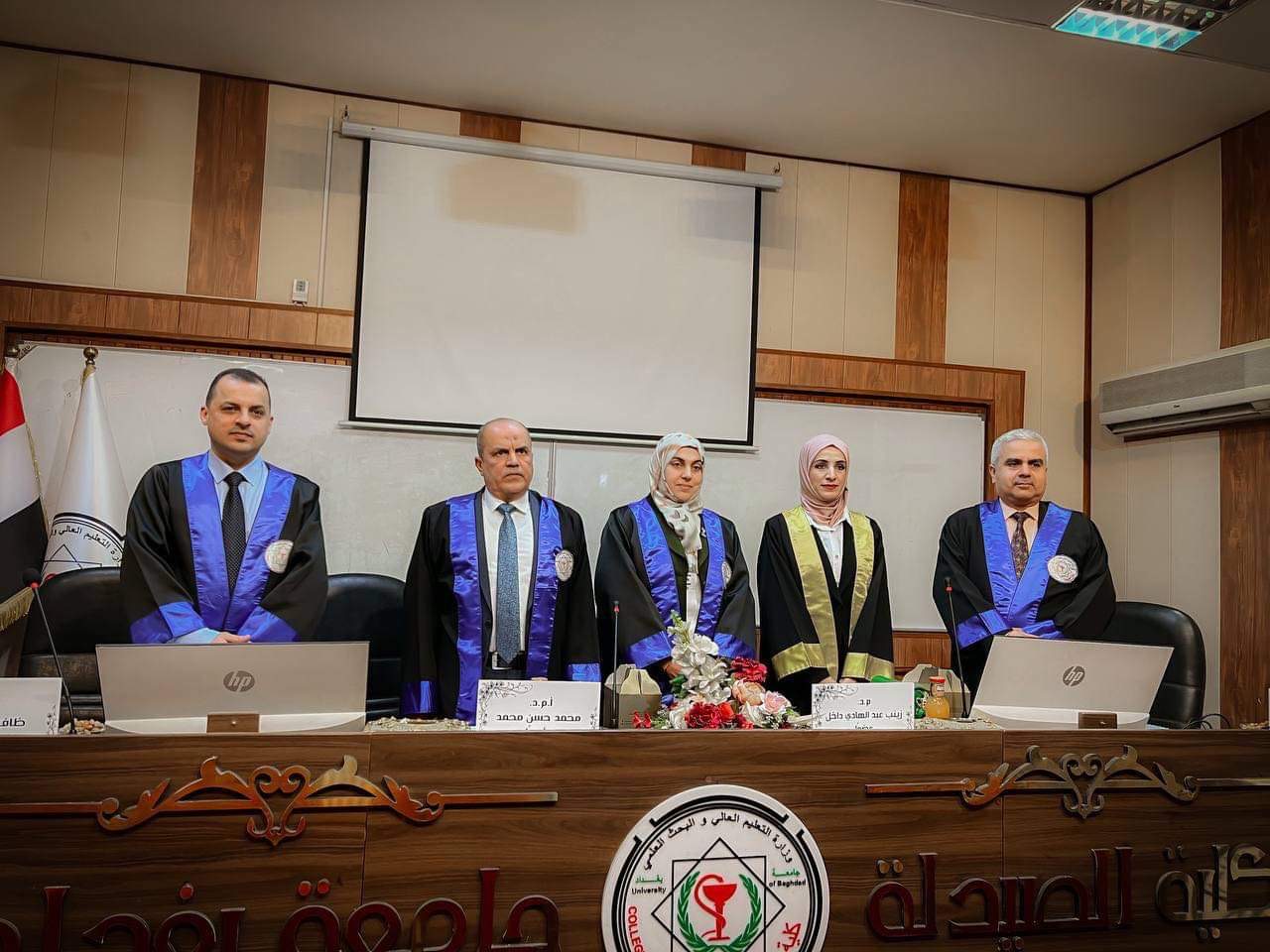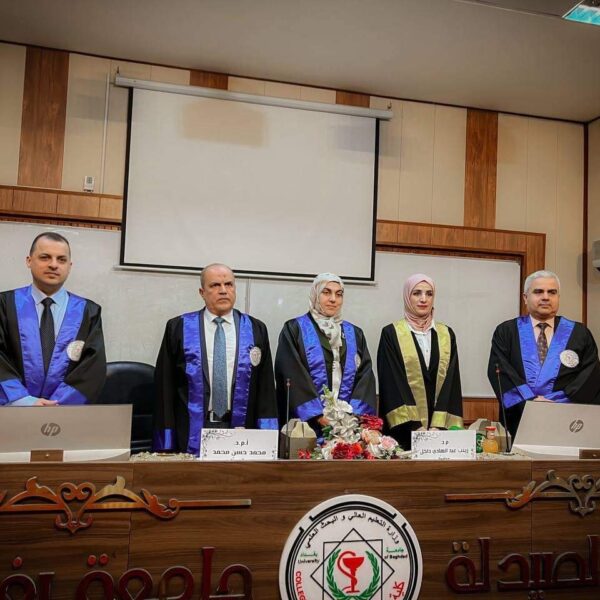The Faculty of Pharmacy discussed the Master thesis “Synthesis,Characterization and Antimicrobial Activity Evaluation of New 3-Acetylcoumarin – Chalcone Conjugate Derivatives)” by the master student Tuka Hassan Abd-Elhussain and the supervisor: Dr. Muthanna S. Farhan in the pharmaceutical chemistry Department. The study aimed to synthesize a new series of pyrazoline and pyrimidine derivatives and examine their ability to inhibit the growth of microorganisms as part of an effort to generate new compounds that exhibit enhanced antimicrobial activity. In order to synthesize new bioactive pharmacophores, 3-acetyl coumarin-chalcone hybrids (2a-c) were utilized as flexible precursors in the synthesis process. In this particular investigation, salicylaldehyde and ethyl acetoacetate interacted to produce 3-acetyl coumarin (compound 1). Condensation of 3- acetylcoumarin with aromatic aldehydes in the presence of piperidine as a catalyst was used to produce 3-acetyl coumarin-chalcone hybrids (compounds 2a-c). In order to produce pyrazoline derivatives, these intermediates reacted under reflux with hydrazine hydrate in the presence of glacial acetic acid as a catalyst to form pyrazoline derivatives (compounds 3a-c) and with semicarbazide and NaOH ,serving as the catalytic agents, to form substituted pyrazoline derivatives (compounds 4a-c) . pyrimidine derivatives ( compounds 5a-c) were produced by reacting these hybrids under reflux with thoiurea in the presence of NaOH as a catalyst in ethanol. The FT-IR and 1HNMR spectroscopy were used to conduct an analysis on the pyrimidine and pyrazoline derivatives that were successfully synthesized as the final target compounds. Antimicrobial activity of the synthesized compounds was tested on two gram-positive bacteria (S. aureus and S. pyogenes), two gram-negative bacteria (E. coli, p. aeruginosa), and one fungal species (C. ablicans). Compounds 4b and 4c exhibited the greatest antibacterial activity against both gram-positive and gram-negative bacteria. Compounds 3a, 4b, 5a, 5b, and 5c had the most potent inhibitory effects against C. ablicans.



